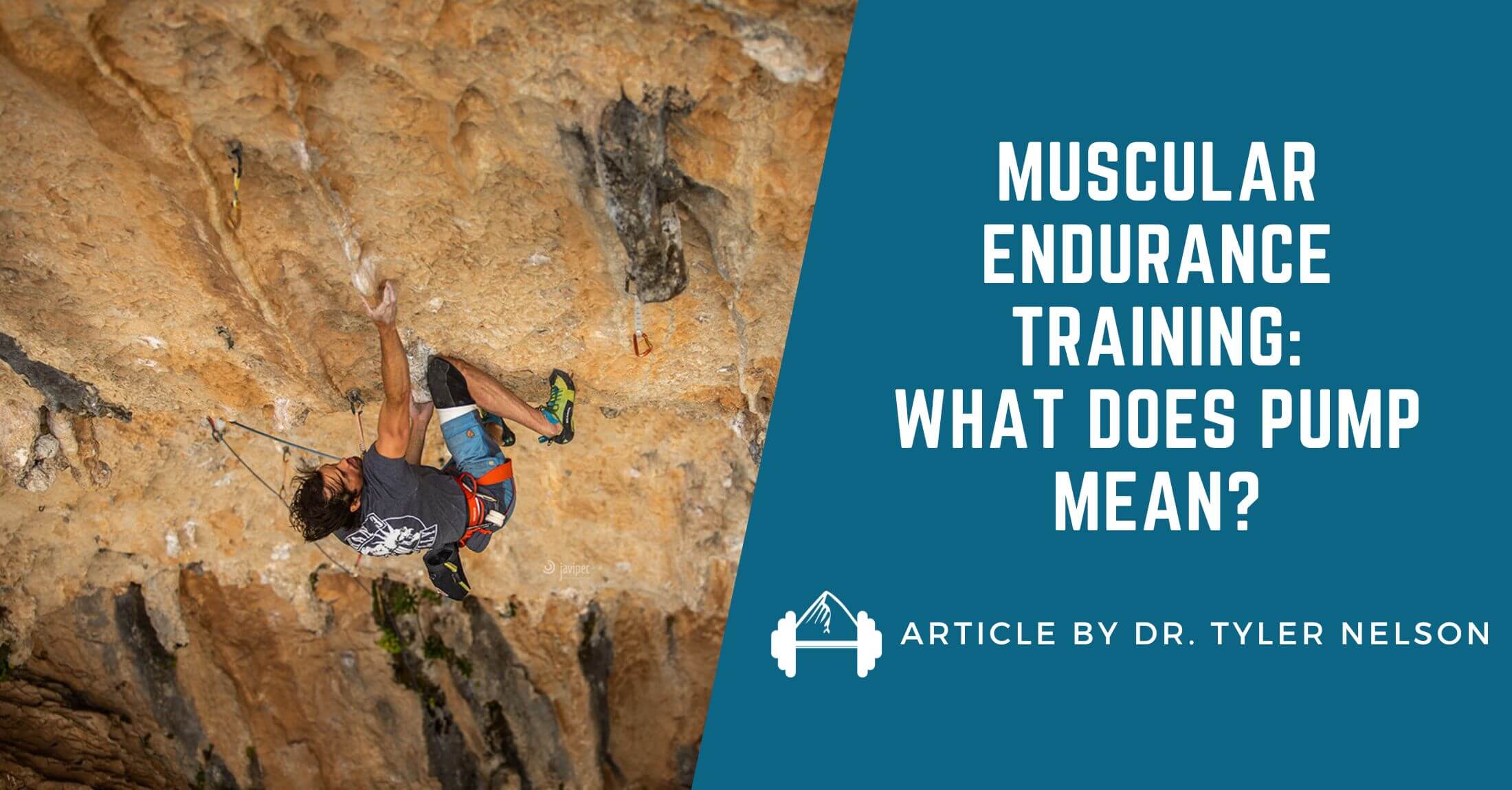As a person who’s spent some long hours on a fingerboard, hangboard, or whatever you want to call it, I can tell you that it sort of sucks. Sometimes, depending on the day, it really sucks. By the way, “I” am Neely Quinn, the founder of TrainingBeta.com. You can read more about me and trainingbeta.com here if you want.
There’s a reason that Jonathan Siegrist is making this ridiculous face during his session. I mean, granted he’s doing a two-finger one-arm on the most heinous pocket ever, but still. It looks painful and hard.
Because it is.
But we know that training on a fingerboard will improve your climbing ability. That, along with campusing, training power endurance, and overall strength, will make you send harder boulders and routes without question. If done systematically, your fingers will get stronger, your callouses will get built up even more than they already are, your tolerance for pain while climbing will increase, and grabbing small crimps will feel downright easy.
How to Train on The Fingerboard
In fact, if you want some direction for your hangboarding sessions, as well as a full training protocol for strength and power for boulderers, check out our Bouldering Strength and Power program. You get 3 new workouts every week for as long as you subscribe, and there’s a free 14-day trial so you can check it out before you commit to anything.
CLICK HERE to check out the Bouldering Strength and Power Program.
Back to the task at hand, though. How do we make fingerboarding less like waterboarding and more like fun? After all, even though we know we need to do it to get stronger, if it’s laborious and time-consuming, we’re going to make up any excuse to not do it. So…
Here are 6 tips to make a hangboard session more awesome.
Well, at least less awful.
1. Music
Music might sound obvious and simple, but it’s so important. To each his or her own, but really intense electronic music always does the trick for me. Check out Jonathan’s playlist for some really good tracks (I don’t think he knows that music outside of EDM exists). Sometimes I’ll switch things up and listen to some Michael Bublé (don’t ever do that and have J-Star walk in on you, though, because the taunting will be relentless – not that I would know). Maybe try some death metal or rap or just anything that makes you PSYCHED.
You will have to endure pain and overcome your body’s overwhelming messages to stop what it is you are doing. So you’d better have something outside of you telling you to continue the masochism.
See the speakers pointed directly at me? The volume was up so loud I couldn’t hear my body telling me to stop. BTW, I’d sliced the tip of my finger off, so I wasn’t using all my left fingers – that’s not normal form! 🙂
2. A Pulley System
Conveniently, the picture above demonstrates my need for music AND a pulley system while torturing myself. Taking weight off during a fingerboarding session can make it
a) possible to finish the workout and
b) more systematic and easier to track progress
When you’re doing, say, 7 seconds on, 3 seconds off on a small crimp 7 times in a row, it can get really hard to finish the reps. Even after a 3 minute break before your next set, you’re still tired from the last set, so it can be impossible to get through the workout. Taking weight off can, like I said, make it possible to get through the workout because you’re not actually having to deadhang with your entire fat ass pulling you toward the earth.
The pulley system is a reliable way to track your progress, too. If you’re just using a rope, a rubberband, or a dirty pair of underwear to take weight off (like Chris Webb Parsons does in this video), it’s really hard to tell how much weight you’re taking off. Plus, you’re going to want to take more weight off when you’re tired, and that’s totally possible to do when you’re holding on to a piece of rope for dear life.
With the pulley system, though, you can directly measure how much weight you’re taking off, and how your sessions improve over time. Because with any luck, you’ll be taking off less and less weight each session.
So you just get a pulley system – the Anderson brothers made the Rock Prodigy Pulley Kit that works really well – hang it up like the picture shows, get some weights (or a small child or whatever) and strap them and yourself onto the rope with slings and harnesses, and you have yourself a system. Don’t take off too much weight, you cheater. Just enough so that you can get through your session!
3. A Boar’s Hair Brush
Like the one below – here’s a link to Amazon where you can get your own.
Your board is going to get slimy and chalky and gross, and it’s going to become harder and harder to stay on those little grips if you don’t brush them off. Boars hair, though old fashioned, is all the rage among climbers now because it’s really effective at absorbing grease, sweat, and chalk. Brush off your holds after every set. It’ll give you something to do to take your mind off the session, it’ll keep your board in better shape for longer, and it’ll help you finish your session.
4. A Fan
You see that fan strategically hung right at the level of my fingers in the photo above? Definitely do your best to mimic that because it makes a huge difference in whether or not you can grip the tiny crimps on your hangboard. Your fingers are constantly sweating and creating heat on the board, and thus it gets harder and harder to hold on. The fan will continuously dry off the holds and keep them as cool as possible so you can, in turn, continuously inflict pain on yourself.
The other thing is to have your hangboard in a cool room. The point of hangboarding is to train your fingers to hold on to small holds for longer – to strengthen your finger muscles and tendons. It’s not to strain your fingers and hands by trying to keep them on a slippery hangboard. The cooler the room, the less you’ll sweat and the better the friction will be. Translation, you’ll be able to hold on and train finger strength for longer before slipping off.
5. The Right Hangboard
For God’s sake, don’t use the hangboard on the right in the photo above if you don’t want to cry yourself to sleep after your sessions. That’s the Moon Fingerboard, and it’s great if you’re Jonathan Siegrist (or my mutant husband, Seth), who seem to not have pain sensors in their fingers or feet. But for me – I’m a 5.13 climber who likes the skin on my fingers to stay mostly intact – it’s just too painful and difficult. I like the Beastmaker – the one I’m hanging on in the photo – because it has holds of all sizes and shapes. Not just razor-sharp 1/8 pad crimps. But as always, to each his/her own!
Find a board that you can get through an entire session on without bleeding. The point here is to strengthen your fingers and to continue to do the fingerboard sessions on a regular basis. So if your board is too hard (or too easy) for you, get one that suits you better.
J-Star did a really nice review of the best hangboards out there – check it out here. He tells you which boards are good for which level of climber and why he likes or dislikes them, so it should help you choose one for yourself.
6. These Things
These acupressure rings are amazing for finger recovery.
I got mine on Amazon here, and they’re seriously amazing. When you get done with a fingerboard session, your fingers are swollen, hot, and painful. That is, if you’ve done a good job in your session… They’re painful and these things take away a lot of the pain. Each of the rings has a different amount of give to it, so it puts a different amount of pressure on your fingers. When you roll them up and down your fingers, you can finally find peace in the world. Highly recommended.
There you have it! I hope this makes your finger training sessions a little more bearable. And remember, if you want some direction for your hangboarding sessions, as well as a full training protocol for strength and power for boulderers, check out our Bouldering Strength and Power program. You get 3 new workouts every week for as long as you subscribe, and there’s a free 14-day trial so you can check it out before you commit to anything.
CLICK HERE to check out the Bouldering Strength and Power Program.
If you liked this post please share it on Facebook, Twitter, Google+, etc. using the buttons below. Oh, and let us know in the comments your personal tips for a successful hangboarding session.









Hi Neely,
How did you fix the Hangboard to the ceiling? In my flat I have the problem of drywalls and need to fix my hangboard to the ceiling.
Hi Hannes, I’m really sorry, but that wasn’t my hangboard and I don’t know for sure how he affixed it to the ceiling. In the past, my husband and I have screwed wood to the studs in the ceiling and then screwed the hangboard onto those. I wish I could be more helpful, but I just don’t know!